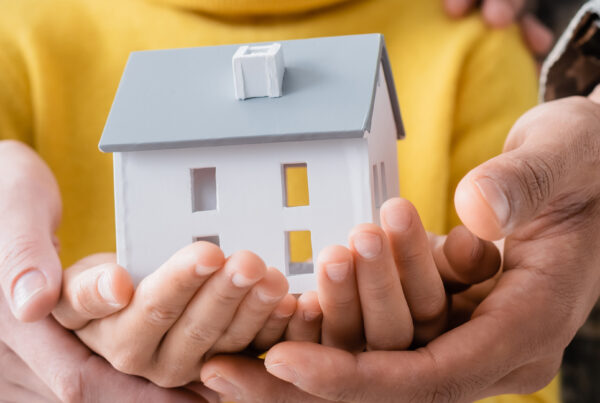by Tara Forth and Sabrina Huda, Sesame Street
Going back to school is a big change for all kids. Now, because of the ongoing COVID-19 pandemic, going back to school may be even more stressful, and may look very different for many children and families, especially our military kids.
As military moves began to restart late summer and into early fall, it’s still a Permanent Change of Station (PCS) season like none other. Some travel restrictions have been eased, and more service members are moving. But things could change quickly, so service members and families need to be even more flexible than usual in their permanent change of station moves. The moving season is going to stretch out this year for military members. And because of the readiness needs of the services, some families may move later than their service members’ report date.
Whether children are going back to school full time, learning from home, a mix of both, or families are PCSing now or later, there are things you can do as a military service provider to help the families you serve feel hopeful, excited, and ready. Explain to children that when they’re setting off on an adventure, it’s important to be prepared. Then invite them to help you do a few things to get their whole family ready for their back-to-school PCS adventure.
Below are helpful tips and strategies you can offer to the families you work with to ease this back-to-school transition time.
If kids are going back to school:
• Talk to kids about what they can expect at school. Your child might ask: Will I need to wear my mask all day? Can I hug my friends? Who will I see? Will I get to eat in the cafeteria? Answer his questions as best you can, and be ready to reassure him many times. Remind him that change has happened before (staying at home), and caring grown-ups will help him remember any new rules he needs to follow.
• Talk about what will be different and what will stay the same. Even though she’ll be doing some things at school differently, she’ll still get to see her friends, have fun, and learn! Make a list of routines you can keep even when school starts.
• Practice and play. Remind kids that aside from new rules to help us stay healthy, there are different ways to behave at school, such as wearing masks, being quiet, listening to others, raising your hand to speak, staying in your own seat, and more. Play pretend school with your child to help them practice and prepare.
• Set up a learning space at home. Even if kids are going to school full time, it’s a good idea to be prepared for a time of at-home learning.
If kids are staying home:
• Define spaces for learning, play, and comfort at home. Defining a learning space at home (even a mat on the floor with a moveable tray works!) will help your child make the mental “shift” from home behavior to school behavior. Consider also creating a comfy-cozy space for your child. Children learn best if they first feel safe and secure. Offering a special spot to take a slow deep breath, unwind, or read a good book may help.
• Talk about “me” and “we” time. If your child is learning from home, that may mean you are working from home, too, while also helping facilitate at-home school. It can be difficult to find balance. Let your child know that now you both have jobs to do, and sometimes you’re each going to need time to focus on your own work. Reassure him that you’ll also spend time together doing things you enjoy. If you can, set a time each day for one-on-one fun together.
• Practice with technology. Before your child begins virtual learning, be sure to do a test run to ensure they can interact with their classmates and receive and turn in assignments. Invite your child to help make a space that’s comfortable for them.
If kids are learning at home and school:
• Practice school rules at home. Usually there are different behavioral expectations at school than at home. Hybrid learning means that kids will need to practice school rules at home. Talk with your child about what’s expected. Practice things like sitting quietly, being still, and hand-raising at home.
• Celebrate your learning team. Even in “normal” times, parents and teachers are part of a learning team. Now, more than ever, all the grown-ups in kids’ lives will need to communicate clearly, ask questions, say thank you, and have patience. Remember that you’re in this together!
• Get comfortable with technology. Sometimes technology can be trickier to figure out for grown-ups than for kids! Before your child begins virtual learning, be sure to do a test run to ensure they can interact with their classmates and receive and turn in assignments.
And most importantly, for all children:
• Offer comfort. During big changes, support from caring adults can offer children comfort and reassurance. Spend time and talk with children regularly. Consider setting up a comfy-cozy space for children (and grown-ups!) to unwind and reset from time to time.
• Maintain routines. Now, more than ever, kids will delight in knowing that not everything is different. Spending ordinary moments such as getting dressed, brushing teeth, and reading books at bedtime together consistently can give kids a sense of security during a transition. This is important for adults too!
• Practice healthy habits. There’s a lot you can’t control right now, but you can try to make healthy choices. Eating healthful meals, moving your bodies, and getting rest can help lift your whole family’s spirits.
• Focus on the positive. Consider making a list of three positive things each day together. For example, children might have helped make lunch/dinner, saw their friends (whether in school or virtually), played a new game or read a new book.
• Celebrate often. And finally, celebrate your children. Point out what makes them special. Talk about their accomplishments, such as reading a new book, remembering to wash their hands, or trying a new food. Applaud what they’re learning and how they’re growing. And don’t forget to celebrate yourself! Celebrating successes helps build confidence.
Blog Image: Photo from Sesame Street in Communities, used with permissions













